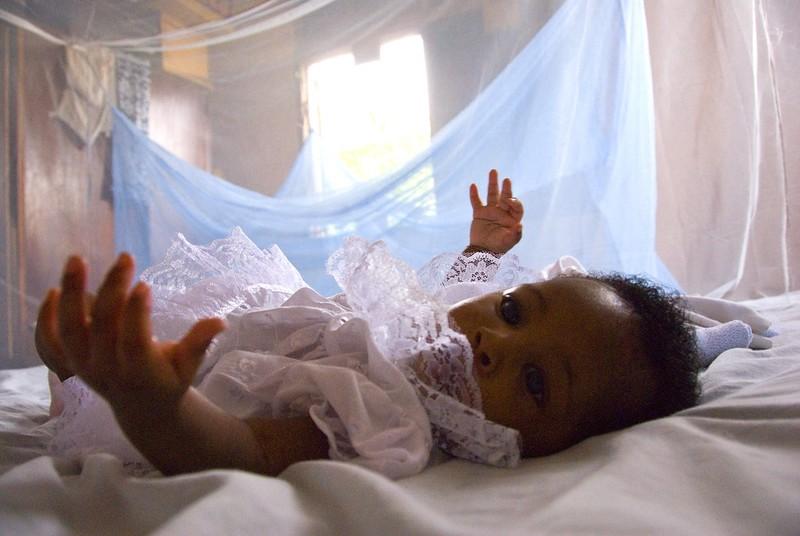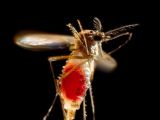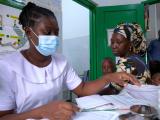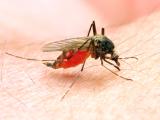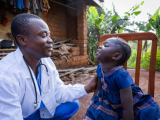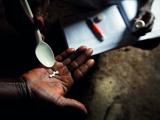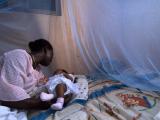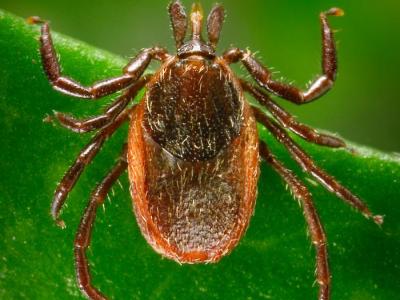A study yesterday in PLOS One shows the continued prevalence of malaria among children in sub-Saharan Africa, suggesting that as many as 3 in 10 children have been infected with the mosquito-borne disease.
The study was based on the Malaria Indicators Survey in Burkina Faso, Ghana, Guinea, Kenya, Liberia, Madagascar, Mali, Malawi, Mozambique, Nigeria, Sierra Leone, Senegal, and Tanzania. Data from 60,541 children aged 6 months to 4 years and 9 months were included. The surveys were conducted in 2015 through 2021 and included interviews with 74,976 parents or guardians.
Children ages 5 and under at the largest risk of death from malaria, and, globally, every 75 seconds a child dies from the disease somewhere in the world. Africa accounts for 95% of malaria cases and 96% of malaria deaths.
The authors of the study said they aimed to illustrate what risk factors led to a higher prevalence of the disease, and which prevention strategies should be promoted in the future. Surveillance of malaria trends, according to the World Health Organization, is key to identifying the most affected populations, detecting possible determinants, and assessing the effectiveness of malaria prevention tools, including insecticide-treated bed nets.
Risk rises with age
Overall, the prevalence for all countries included in the study for children up to age 5 was 27.41%. Senegal had the lowest prevalence (5.04%), while Sierra Leone had the highest (62.57%).
Older age was related to higher rates of malaria: In every country included in the survey, the older a child, the higher likelihood of malaria infections. This is likely because infants have maternal antibodies that wane over time.
Children from families with fewer children and children whose mothers had higher education levels were less likely to have had malaria than children who were born into large families to mothers with low levels of education.
Our study revealed an inverse relationship between the household wealth quintiles and malaria infection.
"Our study revealed an inverse relationship between the household wealth quintiles and malaria infection," the authors said. "The risk of being infected by malaria among children from the richest household was 84% less compared to the poorest."
Older children loving in large families are also at risk because they are less likely to have their own mosquito netting for sleeping, the authors said.
Poverty linked to malaria
About 38% and 45% of the mothers in this study did not attended formal education and were categorized in low-wealth quintiles, respectively, the authors said. Nearly three fourths (74.03%) of study participants were rural residents, and in total 33,972 (56.11%) uses treated mosquito nets.
Children from large families (adjusted odds ratio [AOR], 1.35; 95% confidence interval [CI], 1.26 to 1.45), who lived in rural areas (AOR, 2.16; 95% CI 2.06 to 2.27), and with high community poverty (AOR, 2.66; 95% CI, 2.53 to 2.84) were most likely to be infected with malaria.
Conversely, children from the richest households (AOR, 0.16; 95% CI, 0.14 to 0.19), those whose mother attended primary education (AOR, 0.78; 95% CI, 0.73 to 0.84), those who had improved housing material (AOR range, 0.65 to 0.73), and those from communities with a high use of insecticide-treated bed nets (AOR, 0.40; 95% CI, 0.24 to 0.63) were less likely to be infected with malaria.
"Educated mothers usually have a better standard of living and better comprehension of malaria-related information that could help them to protect their children," the authors said. "Mothers expand their knowledge about the impact of mosquito nets utilization, indoor residual spray, and other potential preventive measures for malaria."
The authors said their study should prompt more maternal education about malaria and about the distribution of insecticide nets, especially in rural homes.
